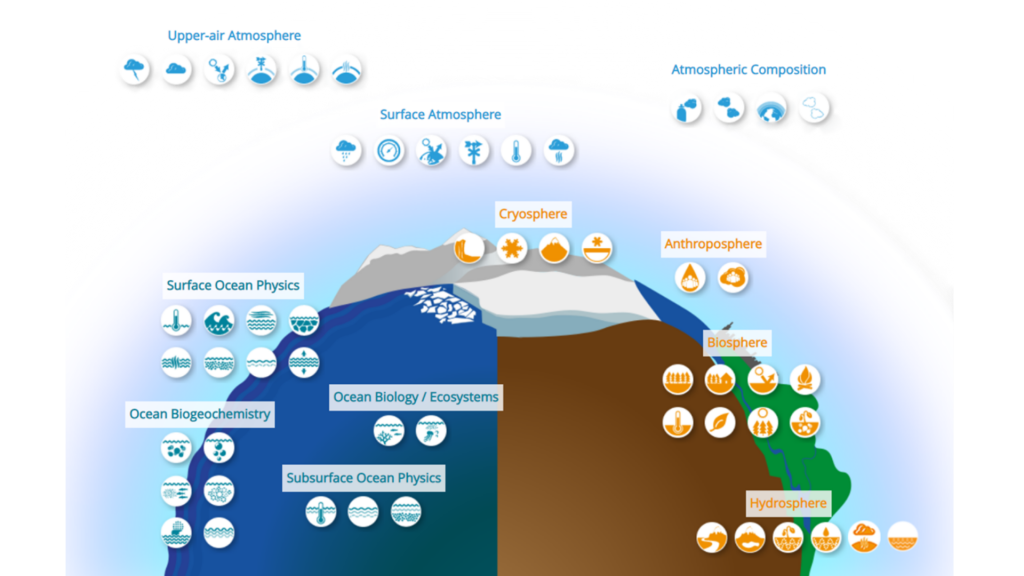Essential Climate Variables (ECVs)
Essential Climate Variables (ECVs) are fundamental physical, chemical, and biological measurements that provide the backbone for understanding the Earth’s climate system. Defined by the Global Climate Observing System (GCOS), ECVs are critical for detecting climate change, improving climate models, and supporting mitigation and adaptation policies.
1. Aerosols
We perform detailed aerosol characterization in terms of optical, physical, and chemical properties:
-
Optical properties, including black carbon concentrations, are measured using a multi-wavelength Aethalometer (AE33).
-
Physical properties, such as particle number and size distribution, are monitored using SMPS, APS, CPC, and the GRIMM EDM 180 dust monitor.
-
Chemical composition is continuously analyzed with an Aerosol Chemical Speciation Monitor (ACSM).
-
Cloud condensation nuclei (CCN) concentrations are measured with a CCN counter, supporting studies on aerosol-cloud interactions.
-
Bioaerosols are monitored using the Rapid-E detector, expanding our insight into biological aerosol components.
-
Remote sensing of aerosols is conducted via a multi-wavelength lidar system and a photometer, providing data on aerosol optical depth, vertical profiles and other key aerosol properties during the day and at night using sun and lunar observations.
2. Clouds
Cloud properties are monitored using advanced ground-based remote sensing instruments:
-
Vertical structure and dynamics of clouds are measured using a Doppler cloud radar and a ceilometer.
-
Liquid water path and atmospheric profiles are retrieved from a microwave radiometer.
-
Precipitation microphysics are observed with a Micro Rain Radar.
-
Wind profiles, relevant for cloud transport and dynamics, are measured with a scanning Doppler wind lidar.
3. Radiation
Surface radiation is a key component of the Earth’s energy budget. Our site is equipped with:
-
Two CMP22 pyranometers, providing continuous measurements of global solar irradiance.
4. Meteorological Variables
A full set of surface meteorological parameters is recorded, including:
-
Air temperature, relative humidity, atmospheric pressure, wind speed and direction, and precipitation amount.
These are essential for interpreting atmospheric measurements and for modeling purposes.
5. Trace and Greenhouse Gases
Our facility monitors several trace and greenhouse gases:
-
Reactive trace gases (e.g., NO₂, SO₂, O₃) are observed with a Pandora DOAS instrument.
-
Greenhouse gases, including CO₂ and CH₄, are monitored using an EM27/SUN Fourier-transform infrared spectrometer, which provides high-precision total column retrievals.
Through this comprehensive infrastructure, our department contributes directly to the long-term monitoring of atmospheric Essential Climate Variables. These observations support climate research, air quality assessments, and international data networks, ensuring science-based environmental decision-making.
Useful link:

